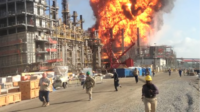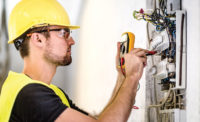The final version of the 2018 edition of NFPA 70E® - Standard for Electrical Safety in the Workplace® is scheduled to be published next month (September) and will be active 15 days after publication.
70E®, of course, addresses electrical safety-related work practices and is a tool to help companies avoid injuries and fatalities due to shock, electrocution, arc flash and arc blast; and it assists in complying with OSHA 1910 Subpart 5 and OSHA 1926 Subpart K.
A contemporary guide
Though not NFPA’s defined scope of 70E®, the 2018 standard reads as a contemporary guide to safety work practices and cultural safety values. For example, the term “hazard analysis’ is replaced by “risk assessment.” “Risk” is increasingly substituted for “safety” today, in part because senior executives better understand risk. Risk is the combination of the likelihood of occurrence of injury or damage to health and the severity of injury or damage to health that results from a hazard.
NFPA 70E® - 2018 recognizes ANSI Z-10 as the basis for “Occupational Health & Safety Management Systems.” Z-10 is a management system approach to safety that every professional should be familiar with. 70E®’s required Electrical Safety Program indeed draws on management system basics: documented safety work practices and procedures; training; inspections; risk assessments; recognition of the potential for human error and its negative consequences; use of the hierarchy of risk control methods; job safety planning and job briefings; incident investigations; program audits, field work audits and lockout-tagout program audits; and emergency response training. Eliminating hazards is emphasized as the first priority in implementing a safety program.
All safety professionals would benefit from reading the 2018 edition’s proposed Informational (non-mandatory) Annex Q – Human Performance and Workplace Electrical Safety. Human performance is another concept gaining currency in safety circles. Annex Q covers worker performance, workplace culture, supervisors and managers, and the role of the organization. Though Annex Q addresses electrical incidents, its language can be read more broadly.
Human performance red flags
For example, Annex Q states the following are worker human performance red flags: individuals or groups exhibit self-imposed production pressure; work activities are considered routine; individuals are quick to make risky judgments; past success without adverse outcomes becomes the basis for continuing current practices; personnel take pride in being able to work through or with levels of risk; risk is not communicated effectively up the company; workers assume supervisors know or understand the risks; and workers are not willing to report high-risk conditions.
Annex Q also states that “it is important that an organization… recognizes and accepts that people make mistakes.” This is a tenet of the increasingly popular “HOP” safety methodology – Human and Organizational Performance. Annex Q states that safe performance is a product of mental processes influenced by policies and goals, the work environment, task demands, and the capabilities of the worker. Today, safety pros are increasingly attentive to the broader context of error factors.
Annex Q states an organization should consistently promote open communication; establish a blame-free culture; support incident and near-miss reporting; use human performance tools to prevent error; identify and prevent formation of error-likely situations; and promoted continuous improvement and learning.




